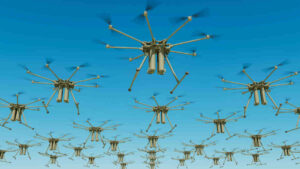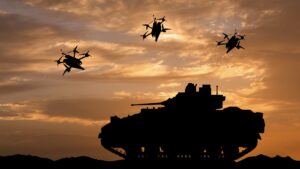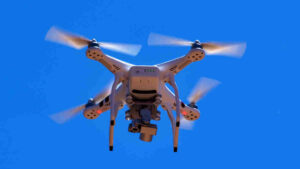This drone-making microcap’s FY20 revenue might be bigger than its market cap

Picture: Getty Images
Orbital Corporation (ASX:OEC) plans to be profitable by June, after telling investors today it made $11.4m in the first half of fiscal 2020.
Full year revenue guidance remains at $25-35m, neatly matching its current market cap of $26m.
That revenue was driven by shipments under a contract with Boeing subsidiary Insitu for a drone engine. The second engine model is in production and a third is in development.
Orbital makes propulsion systems for military tactical drones, the kind that undertake surveillance and intelligence work, and they’re about the size of a car.
The company got its start making engines which is where a considerable amount of its IP lies. In fiscal 2019 year that formula delivered revenue of $15.3m and a $5.9m loss.
But several years ago Orbital moved into propulsion systems — that’s the back section of a drone which includes the engine, electrical generator and fuel tank.
It expects this more focussed business strategy to drive future profits and revenue.
A growth journey
Orbital matured from a Perth-based engineering company into an aerospace manufacturer in the last three years.
It started out as an engine designer, selling a design for an unmanned aircraft to Textron Systems for which it began being paid in 2010.
It stepped up in 2013 after Boeing’s drone arm Insitu asked them to design a full propulsion system for the back of an aircraft.
In 2018, the company signed an extended long term agreement with Insitu for three Orbital-designed propulsion systems and two retrofitted Insitu-designed engines.
The “potential” value is $120m-$350m over five years.
Having bagged Insitu, Orbital is on the hunt for new customers in the defence aerospace industry.
It hired retired US army Colonel Keith Hirschman last year to head the US operations, to do just that.
Hirschman was in charge of tactical drone development for the US military and has deep contacts within the US government.
Orbital CEO and managing director Todd Alder says they are already having serious conversations with potential customers and they are confident they’ll be able to announce some new deals before the end of June.
The bit that makes it go
Alder, who has captained the company into its new form, says Orbital’s intellectual property (IP) was what initially excited him but it took a few months to realise it had another ingredient in its secret sauce.
“I was excited to join three years ago, as I saw a company that had an opportunity with some of its IP and past experience exploiting a growing market in the military drone space,” he told Stockhead.
“I learned over the next 6-18 months that our other secret sauce is our supply chain. When you build these engines you want the minimum amount of deviation from part to part to deliver against the growing demands for engine to engine reliability demanded by the front line defence personnel.”
The real secret sauce is the engine, however.
Defence forces like to use a single type of low volatility fuel, usually kerosene based and known as ‘heavy fuel’, in all vehicles to cut down on logistics and the possibility of fires.
But that wreaks havoc on engines and limits the scope of, for example, drones which may need to fly long distances to reach a target that it must then hover over for a period of time before returning.
Furthermore, Alder says drones of this size typically have a two-stroke engine strapped to the back.
“In the past, these drones have essentially been using a model aircraft engine on the back of a sophisticated aircraft,” he said. “No longer is that acceptable.”
“Our system is more like a modern car where it has a separate oil lubricating system. It injects the fuel directly into the cylinder chambers, and it injects it under pressure.
“It’s like fuel being delivered in an aerosol can rather than a garden hose, it’s atomised.”
The same fuel then burns cleaner, and leaves less contaminants to clog up the engine.
Most importantly, it doesn’t require pre-warming — a warm blanket on the engine, for example — to get going.
Alder says the two minute start time, combined with being able to use heavy fuel without swiftly wrecking the engine, is why they’re targeting militaries which have higher reliability and functionality demands over commercial users.
UNLOCK INSIGHTS
Discover the untold stories of emerging ASX stocks.
Daily news and expert analysis, it's free to subscribe.
By proceeding, you confirm you understand that we handle personal information in accordance with our Privacy Policy.








